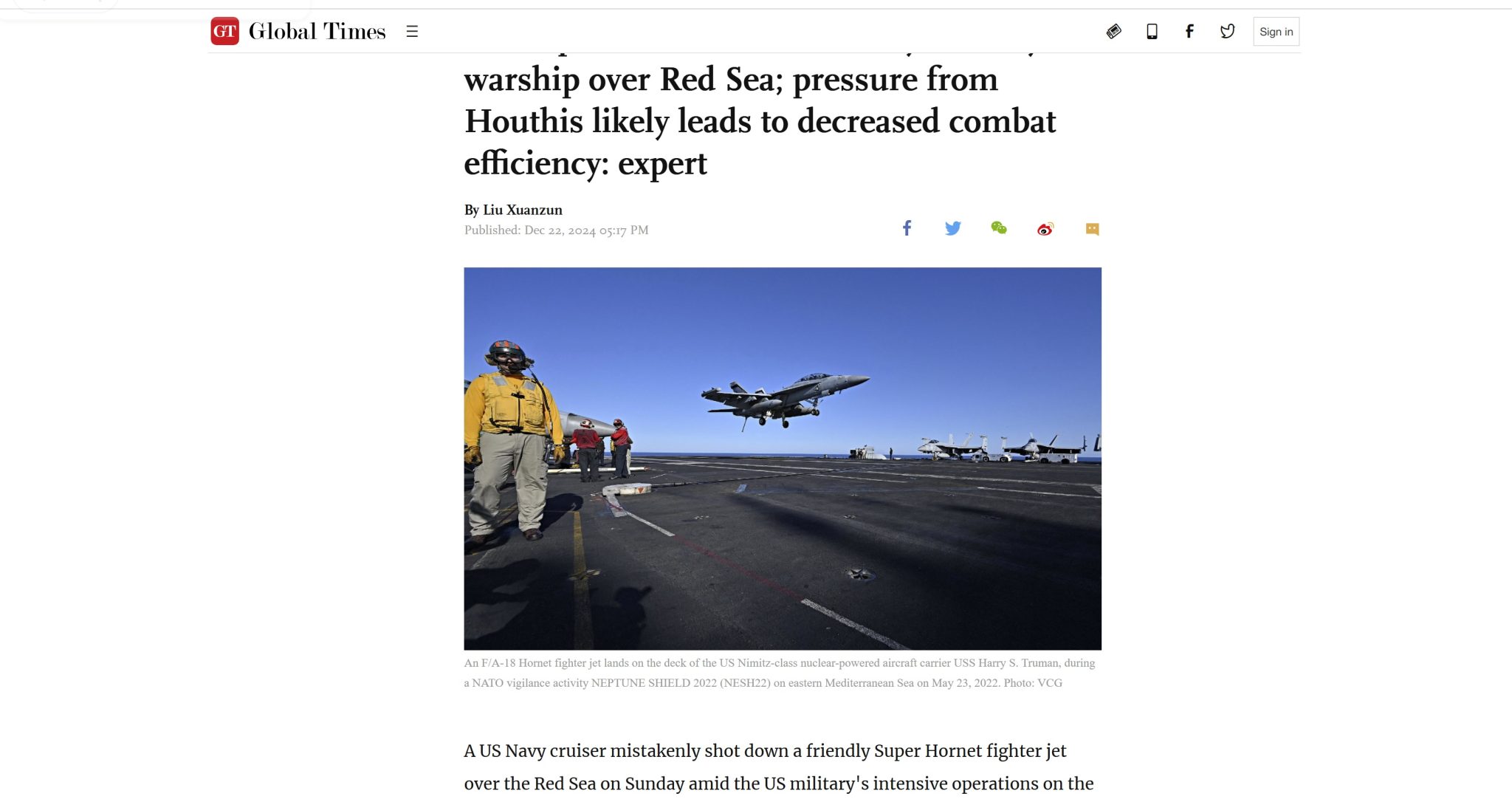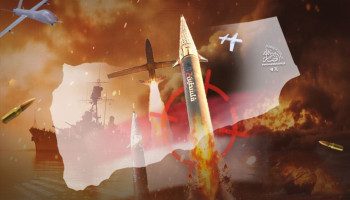Western media continues to analyze and interpret the incident involving the downing of a U.S. F/A-18 fighter jet in the Red Sea. Experts are expressing astonishment over what appears to be a gradual acknowledgment from the United States regarding the incident, not only concerning the jet but also the aircraft carrier and naval forces involved in what some agencies have described as an intense and unprecedented maritime engagement.
The initial U.S. statement, issued three hours after the event, did not originate from the "United States Central Command" (CENTCOM), which typically handles such communications in the Middle East. Instead, the information was disseminated through alternative and independent media outlets, signaling confusion and shock within American ranks.
Chinese Expert Highlights Yemeni Tactical Pressure
The "Global Times" cited a Chinese military expert who attributed the incident to significant psychological and operational pressure exerted by Yemeni armed forces on U.S. naval units. This pressure allegedly led to reduced combat efficiency among American personnel and subsequent operational errors.
Wang Yanan, editor-in-chief of the Beijing-based "Aerospace Knowledge" magazine, pointed to the operational environment surrounding the incident. Speaking to the Global Times, he suggested that continuous drone and missile attacks by Yemeni forces had overwhelmed the U.S. Navy, forcing it into a state of heightened reaction. Wang hypothesized a scenario where an American warship mistakenly targeted a friendly aircraft after intercepting multiple drones.

He further emphasized that prolonged engagements involving new tactics, such as drone deployments, could erode the combat effectiveness of even highly trained forces. Wang also noted deficiencies in the U.S. military's combat information exchange systems, suggesting that an effective system would have identified the aircraft as friendly.
Immediate Yemeni Response and Strategic Implications
Media outlets focused on the circumstances surrounding the incident, highlighting the airstrikes carried out by U.S. aircraft on targets within Yemen. They also hinted at the exceptional manner in which the Yemeni forces responded to the incident, contrasting it with typical scenarios where targeted parties take days to retaliate. While U.S. aircraft were still airborne, Yemeni forces launched missiles and drones, causing significant confusion and contributing to the incident, which the U.S. has termed a "technical error" attributed to "friendly fire."
The incident comes amid intensified military activities in the Red Sea over the past year. Despite Western attempts, Yemeni forces have successfully enforced a maritime blockade on Israeli interests. The U.S. military acknowledged targeting Yemeni drones and missiles over the Red Sea on the same day, with subsequent strikes on sites in Yemen, including the capital, Sana’a.
Historical Context and Repeated Setbacks
The maritime engagement involving the "USS Harry S. Truman" was not the first of its kind but was described as the most intense in over a year. As the primary outlet reporting the news, the Associated Press noted that the U.S. Navy successfully took the two pilots. However, what it failed to mention was the Navy's inability to salvage its sinking reputation. The Yemeni Ministry of Defense claimed to have thwarted a large-scale U.S. attack, forcing Truman to retreat and marking another setback for American geostrategic influence in the region.
According to reports, the U.S. Navy has suffered repeated losses in engagements with Yemeni forces, including damage to four aircraft carriers within a year. Each incident has underscored the growing challenge to U.S. dominance in the region.
"Fog of War"
"Flight Global", a specialized aviation website, characterized the incident as a classic example of a "fog of war," occurring under intense operational pressure. Video footage released by the U.S. Navy showed multiple F/A-18s and an E-2D early warning aircraft launching from the Truman under nighttime conditions shortly before the incident. However, the announcement conspicuously omitted any mention of the friendly fire incident.

Similarly, "Eurasia Review" raised doubts about the U.S. narrative, questioning whether Identification Friend or Foe (IFF) systems were used before the jet was targeted. The report noted that such systems are crucial for distinguishing between friendly and hostile forces, yet they are prone to errors, malfunctions, and exploitation.
The report concluded that the Yemeni forces could not have caused the incident through the use of F/A-18-like technology, as such aircraft are exclusively employed by the U.S. Navy. This, combined with persistent operational challenges faced by American forces in the region, casts further doubt on the official narrative.












